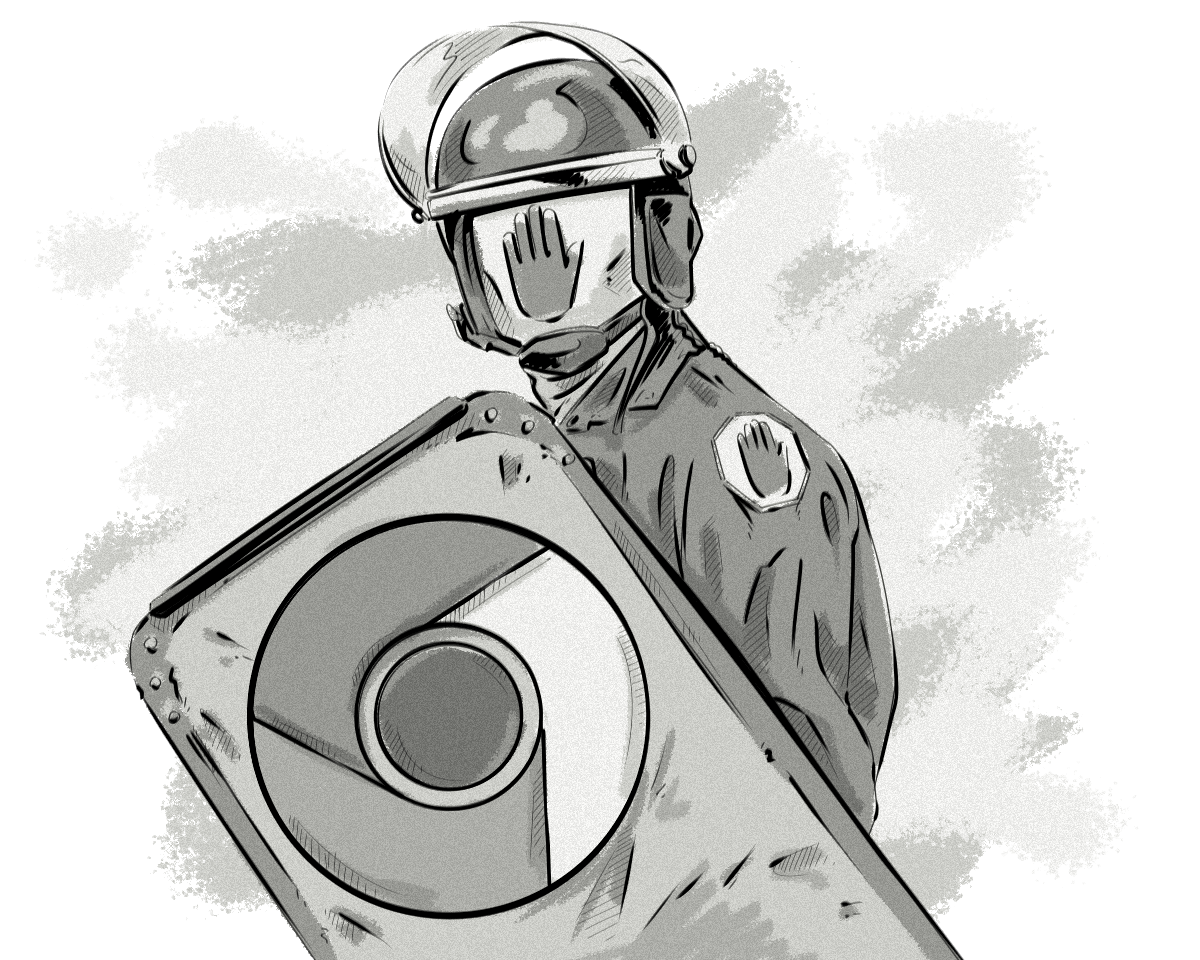Google’s long-awaited addition to Chrome is finally here. As of February 15, the Chrome browser on desktop and mobile devices won’t display some of the more intrusive ads you tend to find across the Internet. Interestingly, however, Google doesn’t really want you to call it an ad blocker. Instead, the official Google blog and Chromium blog refer to it as a filter.
The whole idea behind it is not, as one might assume, to get rid of ads completely (like a regular ad blocker), but to protect you only from the most disruptive ads that are the very reason people decide to install ad blockers in the first place.
What Type of Ads Does the Chrome Filter Block?
Chrome’s filter will only block the ads that don’t comply with the Better Ads Standards proposed by the Coalition for Better Ads. The coalition was formed by leading associations and companies (including Google and Facebook) involved in online media in an attempt to improve consumers’ experiences with online ads.
Following a survey of over 40,000 internet users, they came up with the most problematic ad experiences and websites that notoriously display intrusive ads. The problematic ad experiences blocked by Chrome’s filter will include:
Desktop Ads
According to betterads.org, the ad experiences least preferred by consumers and thus beneath the Better Ads Standards for desktop devices include:
Mobile Ads
The types of ad experiences least preferred by consumers and are beneath the initial Better Ads Standard for mobile devices include:
- Pop-up ads
- Prestitial ads
- Mobile pages with more than 30% ad density
- Flashing animations
- Postitial ads that require a countdown to dismiss
- Full-screen scrollover ads
- Large sticky ads
- Auto-playing videos with sound
You can read more about Better Ads’ research on ad experience and methodology here.
How Can You Install the Chrome Ad Filter?
The good news is you don’t really need to do anything to get the filter going; it starts working with the recent Chrome update. Chances are, most people won’t even notice they’ve received the update. Chrome has the habit of updating to the newest version automatically whenever the browser is closed.
Are My Ads in Trouble?
Those who want to evaluate their sites for compliance with Better Ads Standards can use Google’s Search Console and access the Ad Experience report. From there, site administrators can also have their sites re-evaluated after solving problems with non-compliant ad experiences.
Watch the video to see how it works. (Source: Google Webmasters YouTube channel):
https://www.youtube.com/watch?v=VrVuryo39Zc
How Does the Chrome Filter Work?
While everything happens under the hood and the users may not even realize it’s there, here’s how the filter works:
- Chrome user opens a new page.
- Chrome’s ad filter first checks the page against a list of sites that notoriously fail the Better Ads Standards.
- If the page is blacklisted, all requests for ad-related JavaScript or images on the page are blocked, and no ads are displayed. To determine which requests are ad-related, Chrome uses EasyListpatterns—the same list most ad blockers use.
From an internet user’s perspective, when you open a website that is non-compliant with Better Ads Standards, you will see something like this:

This is where Chrome allows you to decide whether you want to allow ads on the site or keep blocking them.
Can I Stop Using AdBlock Plus Now?
Not really. Quite understandably, Chrome’s filter won’t block all the ads. It is only designed to combat the intrusive, poorly designed ad experiences that get on people’s nerves the most. Sites with ads that comply with Better Ads Standards will be displayed as they normally would.
According to the standards proposed by the Coalition for Better Ads, the following kinds of ads – unlike in the case of using an ad blocker like Adblock Plus – will not be blocked by the Chrome filter. Click on a link to see examples (just remember to disable your ad blocker first):
- Autoplay video ads (without sound)
- Skippable prestitials
- Ads that initiate up to 12 seconds of scroll lag to ensure you see them
- Flashing ads
- Side-rail takeover ads
All of the examples above have been taken from Adblock Plus blog.
Final Thoughts
A growing number of internet users use ad blockers. PageFair’s 2017 report on ad blocking and online privacy revealed that about 11% of the internet users use ad-blocking software.
The bad news for advertisers is that there is little they can do to help, except try and improve the experience for all web users. The idea behind the introduction of the Chrome ad filter is just that, to make ads less intrusive and more appealing to all.
Chrome currently boasts over 53% of the internet browser market, meaning this new filter will have a huge impact on sites that display annoying ads. Also, the fact that the newly introduced ad filter will be blocking intrusive ads by default should be a sufficient incentive for websites to make sure their ads don’t violate Better Ads Standards.








